It was a warm and windy morning. I was checking the native basket flowers, Plectocephalus americanus, for pollinators.
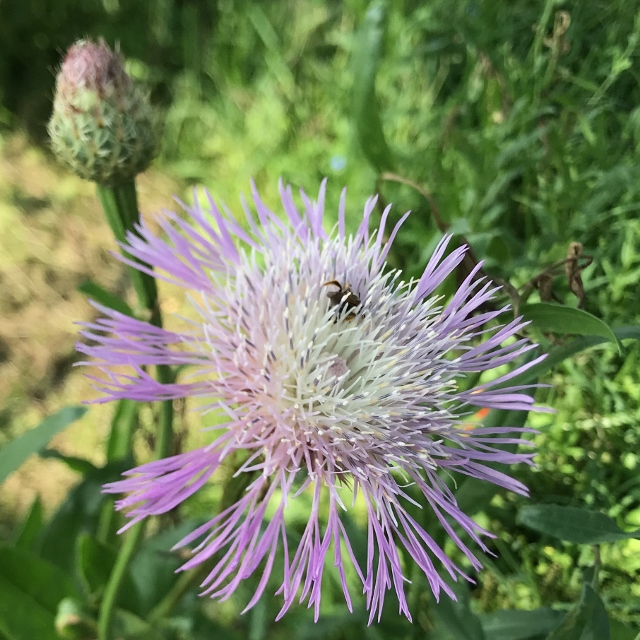
A tiny bee, possibly a ligated furrow bee, was minding its own business wallowing in the pollen in the flower head when suddenly another bee launched on top of it.
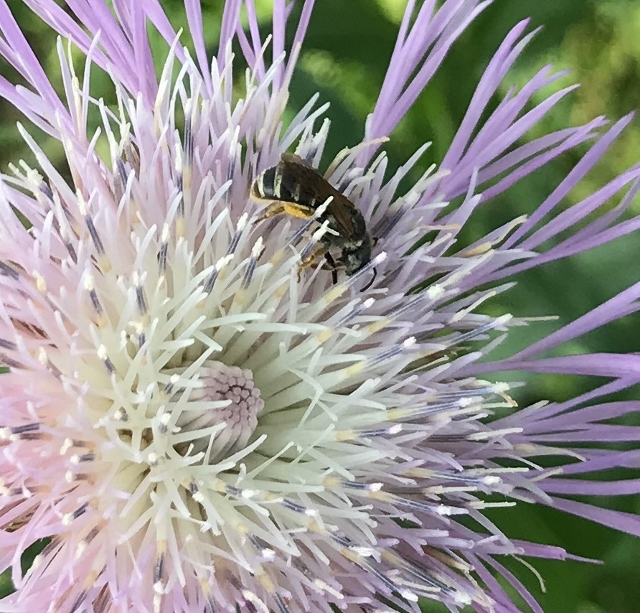
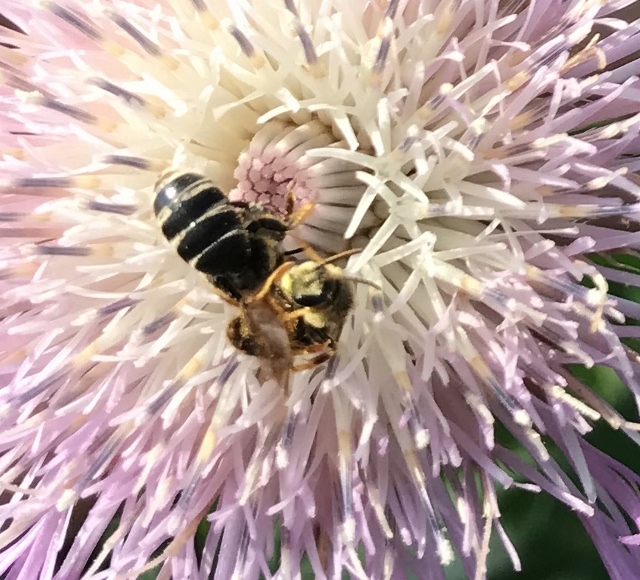
I already had my phone camera at the ready; the skirmish that ensued was captivating but I managed to keep taking photos.
The bees fought like alley cats.
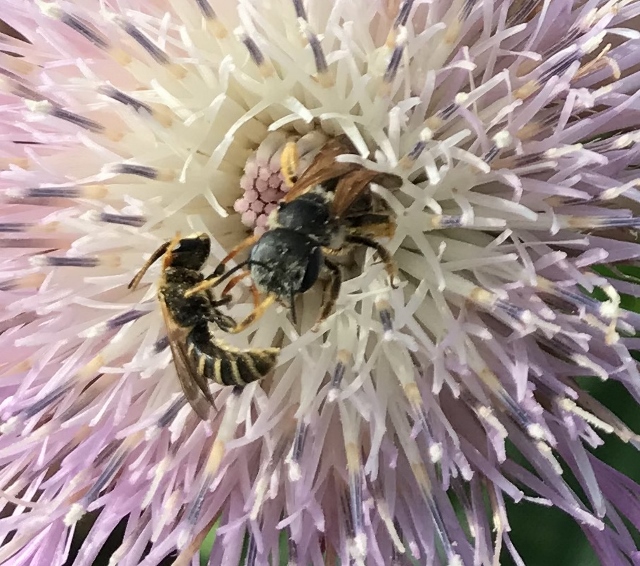
Neither bee relinquished its grappling grip, pummeling each other with tiny, pollen-encrusted fists.
Within seconds, still locked in a bear hug, the bees summersaulted off the flower and vanished.
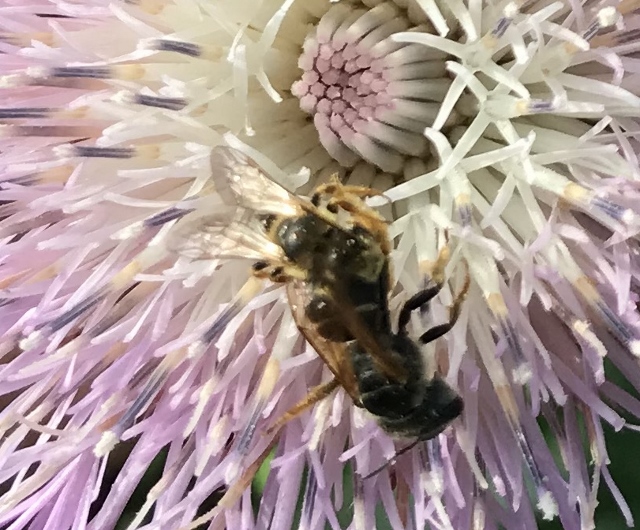
Another day, in another section of yard, I was observing honey bees on a tropical passion vine.
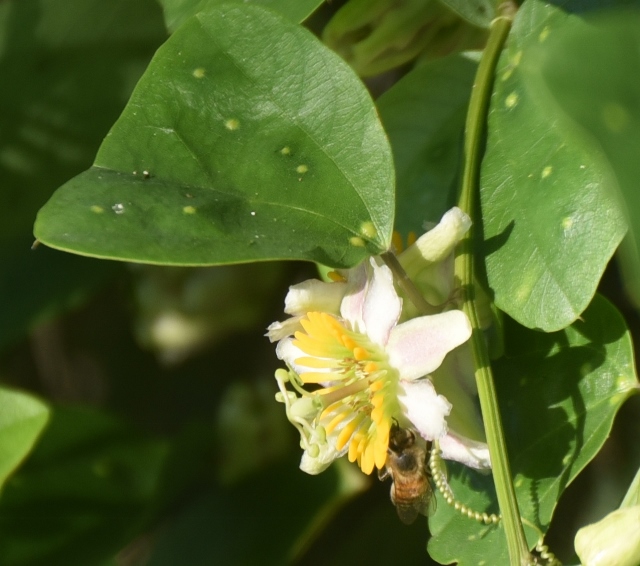
I don’t know the vine species, but I’ve been told that if the leaves are leathery and waxy, it’s a tropical passion vine. Passion flower plants are fritillary butterfly host plants. This vine has been host to many fritillaries in the past four years.
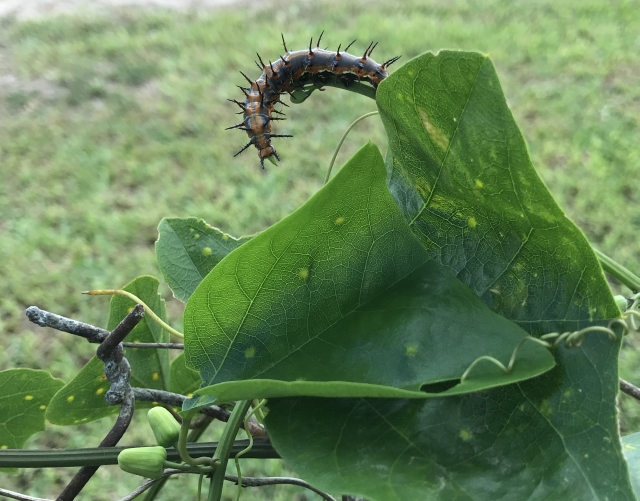
Does anyone remember during our TMN training being told that bees won’t sting you if they’re intent on feeding? I remember — especially when I’m photographing working bees up close with my phone camera. It keeps my fear factor way low.
I was ready to snap a shot of a honey bee in a passion flower when suddenly a B-52 bomber approached from behind, zipped past my shoulder and landed in the honeybee-occupied flower.
This was a completely new bee to me! It was two or three times the size of the honeybee, louder than other bees, and its frenetic flight seemed aggressive — although the honey bee remained calm and carried on with its task. The giant bee darted in and out of the flower, and dashed off and returned several times.
Not wanting to be in its way, I backed away, attempted a couple of half-hearted shots, but the bee was too swift and the phone camera inadequate from a distance. I called retreat and left the scene.
The next day, armed with professional camera and a long lens, I captured enough photos to get an ID on www.iNaturalist.org. I uploaded the best image and selected a possible ID from the line-up the program populated. Once uploaded, I included four additional photos of the subject to show the bee in its entirety for the most possible correct identification by the appropriate iNaturalist identifier. The combined shots showed the eyes, legs, wings and body.
The bee rapidly traveled clock-wise around and around the center of the flower.
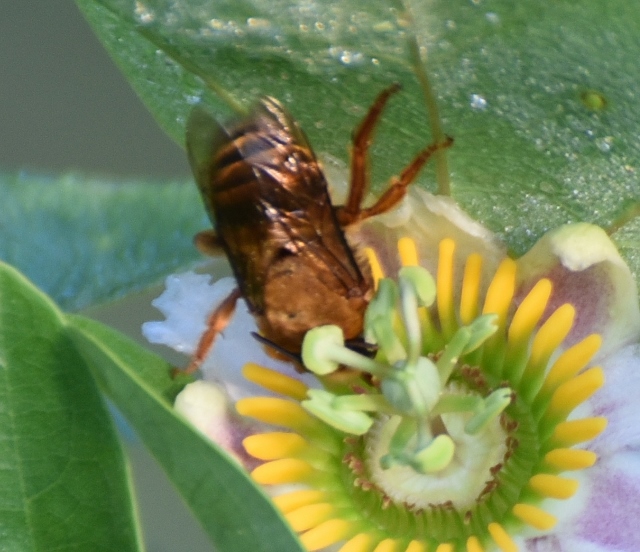
Within a day, I had confirmation from iNaturalist of the species of bee: Ptiloglossa Mexicana, a member of plasterer bees. Knowing the name allowed me to research; I found it was not an attack bee. Still, there’s plenty of room in the garden for me to give it a wide berth.
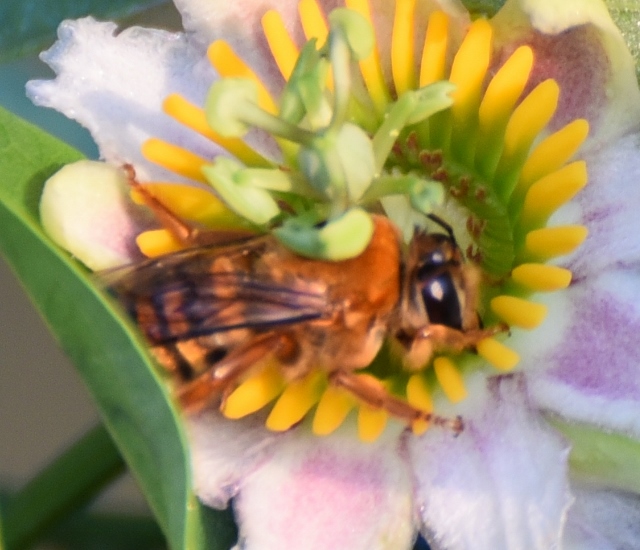
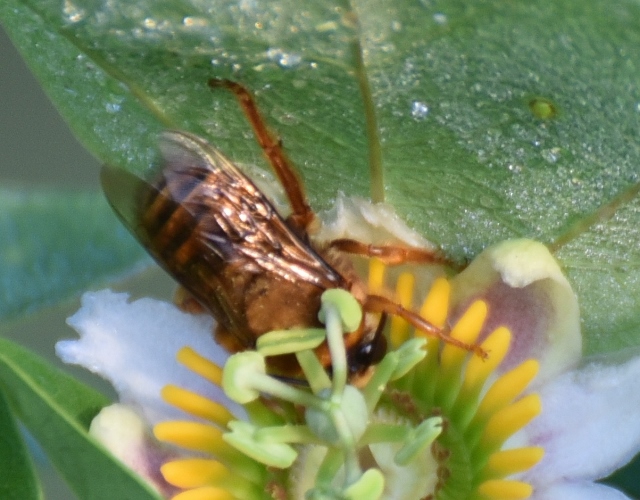
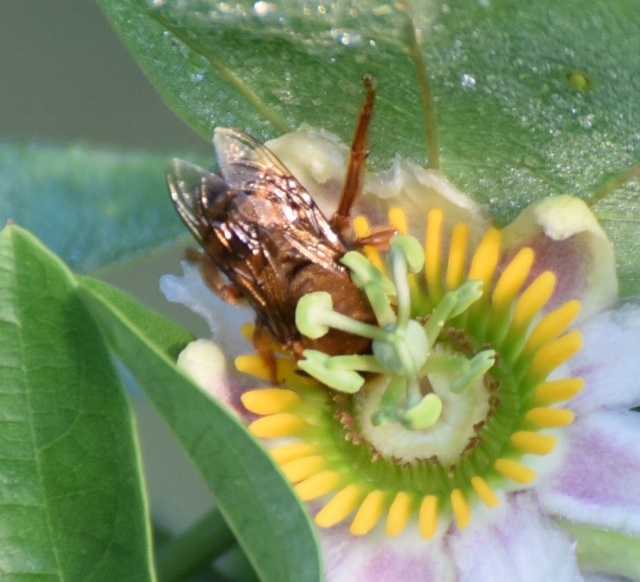
If you’re familiar with my blog posts, you’ll know that I’m a strong advocate of the www.iNaturtalist.org website. Mostly I use it so I know about the plants and critters I find on our property, and in regard to critters like the bee, whether I need to take caution or not around them.
iNaturalist is a joint initiative by the California Academy of Sciences and the National Geographic Society. It is a crowdsourced species identification system, and is available to anyone with a computer or smartphone access with Internet.
Annually, this time of year, the citizen science staff at the Natural History Museum of Los Angeles County (California) and California Academy of Sciences organize a City Nature Challenge, worldwide — a bioblitz-style competition that uses iNaturalist — and which was started to encourage people to find and document plants and wildlife in a friendly competition.
This year, in light of the COVID-19 pandemic, the organizers have changed the focus from a competition to a collaborative aspect that they hope will help citizens to embrace the healing power of nature.
Citizens, throughout the globe, are encouraged to join this year’s efforts in a
Shelter-at-home-backyard-observation event.
Friday, April 24 through Monday, April 27, 2020
For more information and to learn how to use iNaturalist, and to join the activity, visit https://citynaturechallenge.org/
Quinta Mazatlán’s Urban Ecologist, John Brush, shows an excellent, brief, Facebook training on how to use the phone app at this link:
Both the phone app and the online program are easy to use and the website offers turotials: www.iNaturalist.org.
For really in depth descriptions on how to use iNaturalist, check out blogs I’ve written the past two years at the following links:
Anita, amazing photos of bees and commentary on their activity! As a beekeeper in Michigan and NY, I’ve always had a soft spot and interest in them. Many thanks for all your writings to keep us in the know. Carolyn Woughter
Thank you for your glowing compliments! And you a beekeeper! That must have been a lot of work! Interesting and rewarding, I’m sure!